25 Best Places in Europe for Solo Travelers | Tips & Safety
Table of Contents
ToggleEurope is a continent that offers an abundance of experiences, and traveling solo is one of the best ways to immerse oneself in diverse cultures, stunning landscapes, and vibrant cities. For those looking to embark on a solo adventure in Europe, the possibilities are endless. From the bustling streets of Paris to the tranquil beaches of Croatia, there is no shortage of destinations that cater to the independent traveler.
However, with so many options to choose from, it can be overwhelming to plan a trip.
This guide Amazingworld will highlight the 25 best places in Europe for solo travel, along with tips and safety advice to help you make the most of your journey.
Top 25 best places for Solo Travellers
1. Amsterdam, Netherlands
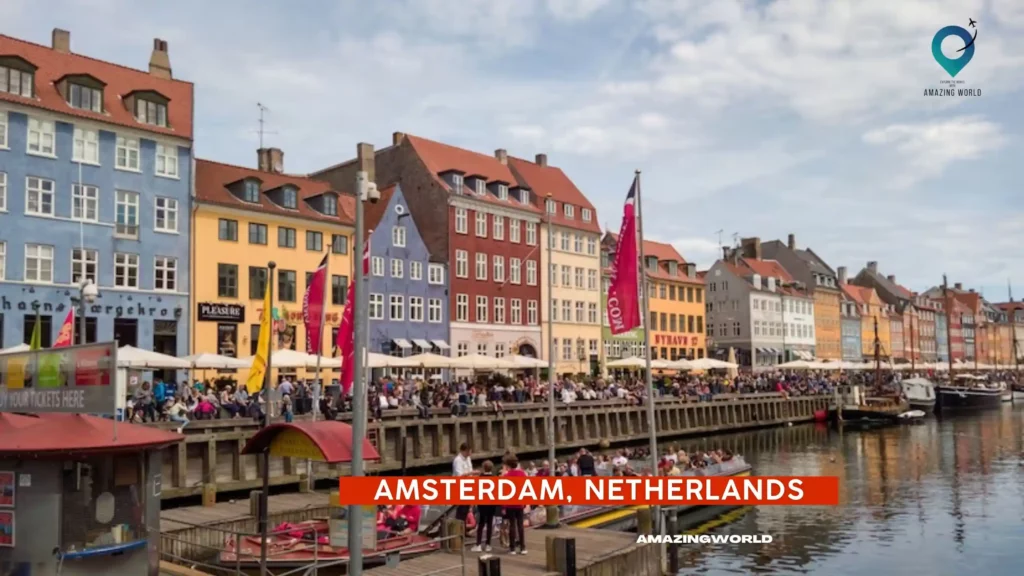
Location:
Amsterdam is the capital city of the Netherlands, located in the northwestern part of the country. It is known for its beautiful canals, historic architecture, and vibrant culture.
Known for:
Amsterdam is known for its beautiful canals, historic landmarks, and liberal attitudes toward drugs and sex work. It is also famous for its museums, including the Van Gogh Museum, the Rijksmuseum, and the Anne Frank House.
Culture:
Amsterdam has a rich cultural heritage, with a thriving arts scene and a diverse population. The city is home to many famous artists, writers, and musicians, and hosts a variety of festivals and events throughout the year.
Nightlife:
Amsterdam is famous for its vibrant nightlife, with a wide variety of bars, clubs, and music venues to choose from. The city’s famous Red-Light District is also a popular destination for those seeking a more risqué experience.
Food:
Amsterdam is known for its delicious Dutch cuisine, including dishes like stroopwafels, bitterballen, and Dutch pancakes. The city also has a thriving street food scene, with many food trucks and markets serving up a variety of international dishes.
Safety:
Amsterdam is generally a safe city, but it is important to be aware of pickpockets and other petty crimes. It is also important to be cautious when using drugs or visiting the Red Light District.
The best mode of transportation:
The best way to get around Amsterdam is by bike or on foot. The city has an extensive network of bike paths, and renting a bike is a great way to explore the city’s many attractions.
If You are planning to visit the USA and looking for the best flight booking from your destination then, So we recommend you book your flight from Qatar Airways or Emirates
Attractions:
Amsterdam has many attractions to offer, including the Van Gogh Museum, the Rijksmuseum, and the Anne Frank House. Other popular destinations include the Jordaan neighborhood, the Vondelpark, and the Amsterdam Zoo.
Local customs:
Amsterdam has a relaxed and friendly culture, but it is important to be respectful of local customs and traditions. For example, it is polite to greet people with a handshake, and it is considered rude to be loud or disruptive in public.
Some travel tips:
- If you plan to visit popular tourist destinations like the Anne Frank House, be sure to book tickets in advance to avoid long lines.
- Be aware that smoking marijuana is only legal in certain designated areas, and it is illegal to smoke in public.
- Take advantage of the city’s many bike rental options to explore the city like a local.
- Be sure to try some traditional Dutch cuisine while you’re in Amsterdam, like stroopwafels or bitterballen.
- Be cautious when using ATMs, and be sure to cover your PIN when entering it.
2. Barcelona, Spain

Location:
Barcelona is the capital of the Catalonia region in northeastern Spain, situated on the Mediterranean coast. It is the second-largest city in Spain, known for its beautiful beaches, rich history, and stunning architecture.
Known for:
Barcelona is known for its beautiful architecture, including the works of Antoni Gaudí, such as the Sagrada Família and Park Güell. It is also famous for its beaches, cultural events, and football team, FC Barcelona.
Culture:
Barcelona has a rich cultural heritage, with a unique blend of Spanish and Catalan influences. The city is known for its vibrant arts scene, with many museums, galleries, and theaters showcasing local talent.
Nightlife:
Barcelona has a lively nightlife scene, with a wide range of bars, clubs, and music venues to choose from. The city is particularly famous for its beach clubs, where you can dance the night away under the stars.
Food:
Barcelona is known for its delicious Mediterranean cuisine, including seafood, paella, and tapas. The city also has a thriving street food scene, with many food markets and food trucks serving up a variety of international dishes.
Safety:
Barcelona is generally a safe city, but it is important to be aware of pickpockets and other petty crimes, especially in crowded tourist areas. It is also important to be cautious when using public transportation, particularly at night.
The best mode of transportation:
The best way to get around Barcelona is by using the metro or walking. The city also has an extensive network of bike paths, and renting a bike is a great way to explore the city’s many attractions.
Attractions:
Barcelona has many attractions to offer, including the works of Antoni Gaudí, the Gothic Quarter, and the Picasso Museum. Other popular destinations include the beachside neighborhood of Barceloneta and the Montserrat mountain range.
Local customs:
Barcelona has a unique culture, influenced by both Spanish and Catalan traditions. It is important to be respectful of local customs, such as taking a siesta in the early afternoon and dressing conservatively when visiting religious sites.
Some travel tips:
- Be sure to visit the Sagrada Família and other works of Antoni Gaudí, but book tickets in advance to avoid long lines.
- Take advantage of Barcelona’s beaches, but be aware that pickpockets may target tourists in crowded areas.
- Be sure to try some traditional Catalan cuisine while you’re in Barcelona, like paella and escalivada.
- Be cautious when using public transportation, especially at night.
- If you plan to visit during the summer months, be aware that the city can get very crowded and hot, so be sure to stay hydrated and wear sunscreen.
3. Berlin, Germany
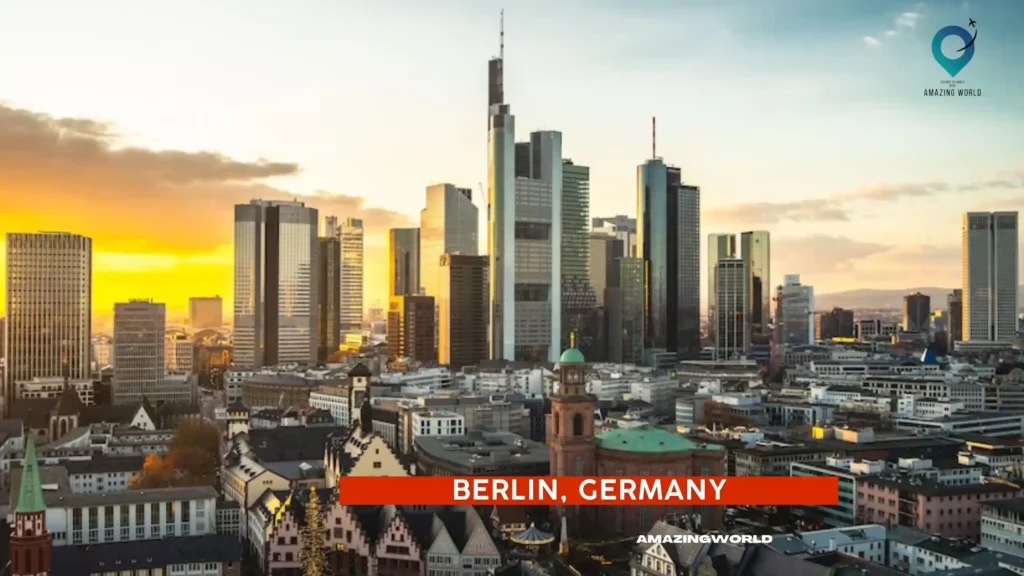
Location:
Berlin is the capital city of Germany, located in the northeast of the country. It is situated on the banks of the River Spree and is home to over 3.7 million people.
Known for:
Berlin is known for its rich history, including its role in World War II and the Cold War. It is also famous for its vibrant arts and culture scene, street art, and modern architecture.
Culture:
Berlin has a diverse cultural scene, with many art galleries, museums, and theaters showcasing local and international talent. The city is also known for its alternative and underground art scenes, including street art and graffiti.
Nightlife:
Berlin is famous for its lively nightlife scene, with many clubs, bars, and music venues catering to all tastes. The city is particularly known for its techno music scene and outdoor parties during the summer months.
Food:
Berlin has a vibrant food scene, with many street food markets, international restaurants, and local delicacies such as currywurst and schnitzel. The city is also known for its craft beer and specialty coffee shops.
Safety:
Berlin is generally a safe city, but it is important to be aware of pickpockets and other petty crimes, especially in crowded tourist areas. It is also important to be cautious when using public transportation, particularly at night.
The best mode of transportation:
The best way to get around Berlin is by using the public transportation system, which includes buses, trams, and trains. The city also has an extensive network of bike paths, and renting a bike is a great way to explore the city’s many attractions.
If You are planning to visit the USA and looking for the best flight booking from your destination then, So we recommend you book your flight from Qatar Airways or Emirates
Attractions:
Berlin has many attractions to offer, including the Brandenburg Gate, the Berlin Wall, and the Reichstag building. Other popular destinations include Museum Island, the Berlin Zoo, and the hip neighborhoods of Kreuzberg and Neukölln.
Local customs:
Berlin has a diverse and accepting culture, with a focus on individuality and self-expression. It is important to be respectful of local customs, such as queuing and separating trash into different categories.
Some travel tips:
- Be sure to visit the Berlin Wall and other historical sites to learn about the city’s fascinating history.
- Take advantage of Berlin’s vibrant arts and culture scene by visiting museums, galleries, and theaters.
- Be sure to try some local food, such as currywurst and schnitzel.
- Be cautious when using public transportation, especially at night.
- If you plan to visit during the winter months, be aware that the city can get very cold, so be sure to dress warmly.
4. Budapest, Hungary
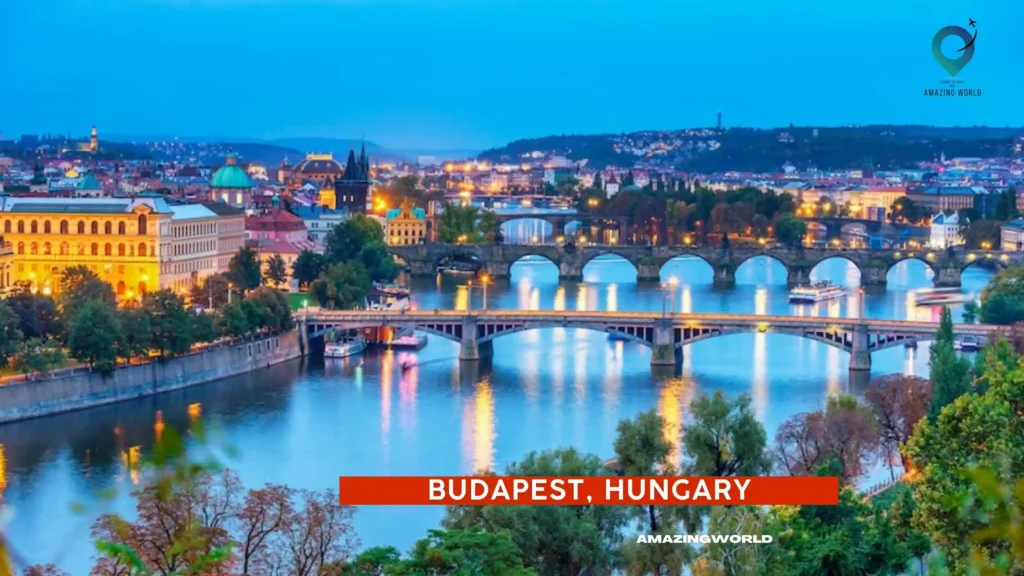
Location:
Budapest is the capital city of Hungary, located in the center of the country. It is situated on the banks of the Danube River and is home to over 1.7 million people.
Known for:
Budapest is known for its beautiful architecture, thermal baths, and rich history. It is often called the “Paris of the East” due to its elegant boulevards and stunning architecture.
Culture:
Budapest has a rich cultural scene, with many museums, galleries, and theaters showcasing local and international talent. The city is also known for its traditional music and dance performances.
Nightlife:
Budapest has a vibrant nightlife scene, with many bars, clubs, and music venues catering to all tastes. The city is particularly known for its “ruin pubs,” which are located in abandoned buildings and courtyards.
Food:
Budapest has a diverse food scene, with many restaurants serving traditional Hungarian cuisine as well as international dishes. The city is also known for its street food, including langos (deep-fried dough topped with cheese and sour cream).
Safety:
Budapest is generally a safe city, but it is important to be aware of pickpockets and other petty crimes, especially in crowded tourist areas. It is also important to be cautious when using public transportation, particularly at night.
The best mode of transportation:
The best way to get around Budapest is by using the city’s extensive public transportation system, which includes buses, trams, and metro lines. The city also has an extensive network of bike paths, and renting a bike is a great way to explore the city’s many attractions.
Attractions:
Budapest has many attractions to offer, including the Buda Castle, the Fisherman’s Bastion, and the Chain Bridge. Other popular destinations include thermal baths, such as the Széchenyi Bath and the Gellért Bath.
Local customs:
Hungary has a unique and rich culture, with a focus on hospitality and traditional values. It is important to be respectful of local customs, such as greeting people with a handshake and using formal titles when addressing people.
Some travel tips:
- Be sure to visit the thermal baths and experience the relaxing and rejuvenating effects of the hot springs.
- Take advantage of Budapest’s rich cultural scene by visiting museums, galleries, and theaters.
- Be sure to try some traditional Hungarian dishes, such as goulash and chimney cake.
- Be cautious when using public transportation, especially at night.
- If you plan to visit during the summer months, be aware that the city can get very hot, so be sure to drink plenty of water and stay hydrated.
5. Copenhagen, Denmark
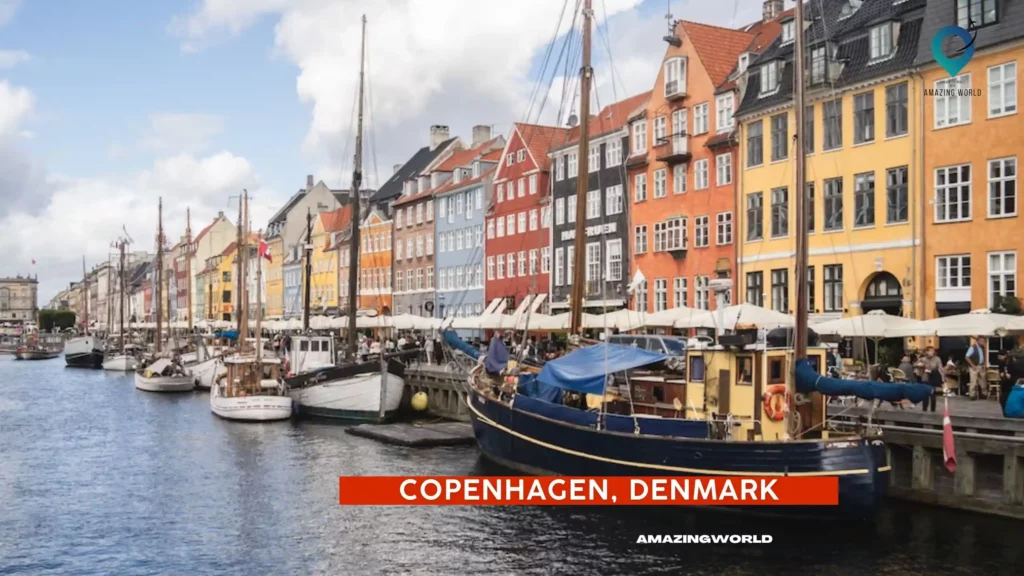
Location:
Copenhagen is the capital city of Denmark, located on the eastern coast of the island of Zealand. It is the largest city in Denmark and home to over 1.3 million people.
Known for:
Copenhagen is known for its colorful buildings, charming canals, and high quality of life. It is often considered one of the happiest cities in the world and is also known for its commitment to sustainability.
Culture:
Copenhagen has a rich cultural scene, with many museums, galleries, and theaters showcasing local and international talent. The city is also known for its music and design scenes.
Nightlife:
Copenhagen has a vibrant nightlife scene, with many bars, clubs, and music venues catering to all tastes. The city is particularly known for its craft beer scene and the famous Carlsberg Brewery.
Food:
Copenhagen is known for its innovative food scene, with many Michelin-starred restaurants and street food markets. The city is particularly famous for its open-faced sandwiches and pastries.
Safety:
Copenhagen is generally a safe city, but it is important to be aware of pickpockets and other petty crimes, especially in crowded tourist areas. It is also important to be cautious when using public transportation, particularly at night.
The best mode of transportation:
The best way to get around Copenhagen is by using the city’s extensive public transportation system, which includes buses, trains, and the metro. The city is also very bike-friendly, with many bike lanes and bike-sharing programs.
If You are planning to visit the USA and looking for the best flight booking from your destination then, So we recommend you book your flight from Qatar Airways or Emirates
Attractions:
Copenhagen has many attractions to offer, including the Tivoli Gardens amusement park, the Nyhavn waterfront district, and the famous Little Mermaid statue. Other popular destinations include the Christiania free town and the Kronborg Castle.
Local customs:
Danish culture places a strong emphasis on equality and social welfare. It is important to be respectful of local customs, such as greeting people with a handshake and using formal titles when addressing people.
Some travel tips:
- Be sure to explore the city’s many parks and green spaces, including the famous King’s Garden and the Frederiksberg Gardens.
- Try some traditional Danish dishes, such as smørrebrød and Danish pastries.
- Be cautious when using public transportation, especially at night.
- Consider renting a bike to explore the city’s many attractions.
- Take advantage of Copenhagen’s commitment to sustainability by using public transportation or renting an electric car.
6. Dublin, Ireland
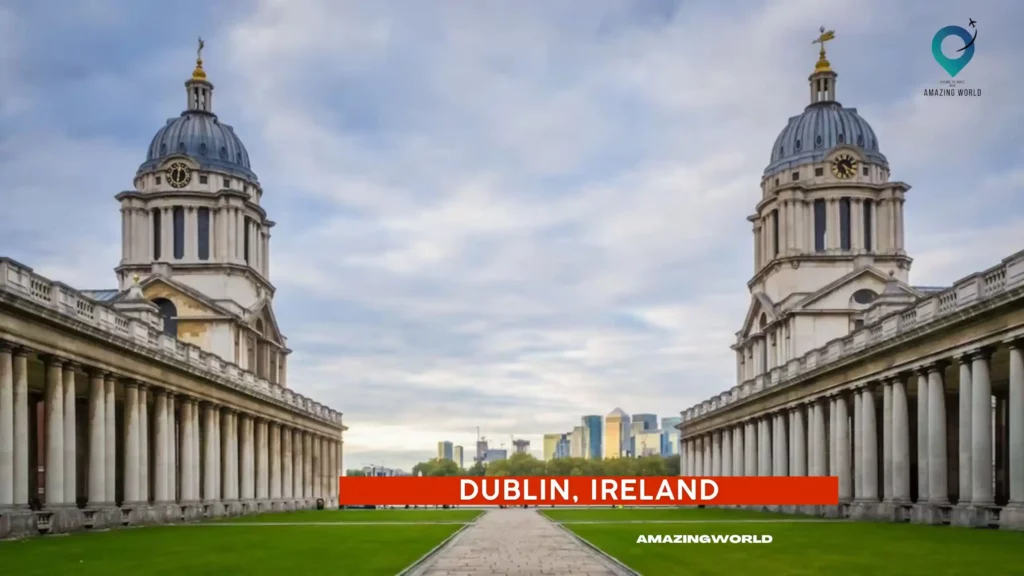
Location:
Dublin is the capital city of Ireland, located on the east coast of the country. It is the largest city in Ireland and home to over 1.3 million people.
Known for:
Dublin is known for its friendly locals, lively pub scene, and rich history. It is the birthplace of many famous writers, including James Joyce and Oscar Wilde, and is home to many historic landmarks.
Culture:
Dublin has a vibrant cultural scene, with many museums, galleries, and theaters showcasing local and international talent. The city is also known for its traditional Irish music and dance.
Nightlife:
Dublin is famous for its lively pub scene, with many traditional pubs serving up pints of Guinness and other local brews. The city also has a thriving nightlife scene, with many clubs and music venues catering to all tastes.
Food:
Dublin has a diverse food scene, with many restaurants serving traditional Irish dishes as well as international cuisine. The city is particularly famous for its seafood, including fresh oysters and fish and chips.
Safety:
Dublin is generally a safe city, but it is important to be aware of pickpockets and other petty crimes, especially in crowded tourist areas. It is also important to be cautious when using public transportation, particularly at night.
The best mode of transportation:
The best way to get around Dublin is by using the city’s extensive public transportation system, which includes buses, trains, and the Luas tram system. The city is also very walkable, with many attractions within easy walking distance of each other.
Attractions:
Dublin has many attractions to offer, including the Guinness Storehouse, the Trinity College Library and Book of Kells, and the Dublin Castle. Other popular destinations include St. Patrick’s Cathedral and the Temple Bar district.
Local customs:
Irish culture places a strong emphasis on hospitality and friendliness. It is important to be respectful of local customs, such as greeting people with a smile and using formal titles when addressing people.
Some travel tips:
- Be sure to try some traditional Irish dishes, such as shepherd’s pie and Irish stew.
- Visit some of the city’s many historic pubs, such as the Brazen Head, which claims to be Ireland’s oldest pub.
- Take a walking tour of the city to learn more about its rich history and culture.
- Be cautious when using public transportation, especially at night.
- Consider taking a day trip to the nearby Cliffs of Moher or the Wicklow Mountains National Park.
7. Edinburgh, Scotland
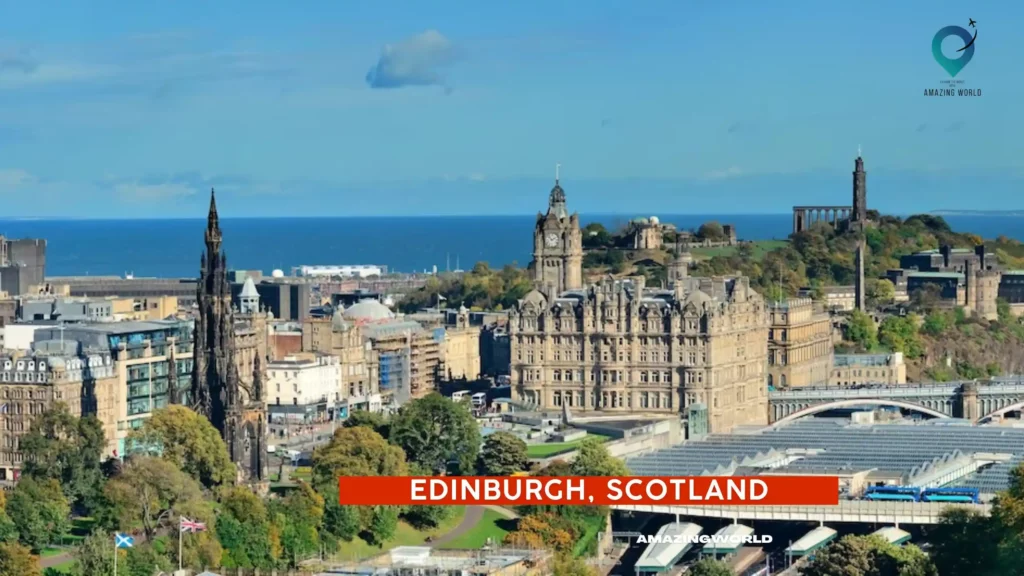
Location:
Edinburgh is the capital city of Scotland, located in the southeastern part of the country. It is the second most populous city in Scotland after Glasgow.
Known for:
Edinburgh is known for its rich history, stunning architecture, and vibrant cultural scene. It is also famous for its annual festivals, including the Edinburgh International Festival and the Edinburgh Fringe.
Culture:
Edinburgh has a thriving cultural scene, with many museums, galleries, and theaters showcasing local and international talent. The city is particularly famous for its literary heritage, with many famous writers hailing from the city.
Nightlife:
Edinburgh has a lively nightlife scene, with many pubs, bars, and nightclubs catering to all tastes. The city is particularly famous for its traditional Scottish pubs, which serve up pints of local brews and traditional Scottish fare.
Food:
Edinburgh has a diverse food scene, with many restaurants serving traditional Scottish dishes as well as international cuisine. The city is particularly famous for its seafood, including fresh oysters and fish and chips.
Safety:
Edinburgh is generally a safe city, but it is important to be aware of pickpockets and other petty crimes, especially in crowded tourist areas. It is also important to be cautious when using public transportation, particularly at night.
The best mode of transportation:
The best way to get around Edinburgh is by using the city’s extensive public transportation system, which includes buses, trains, and the tram system. The city is also very walkable, with many attractions within easy walking distance of each other.
Attractions:
Edinburgh has many attractions to offer, including Edinburgh Castle, the Royal Mile, and the Scottish National Gallery. Other popular destinations include Holyrood Palace and Arthur’s Seat.
Local customs:
Scottish culture places a strong emphasis on hospitality and friendliness. It is important to be respectful of local customs, such as greeting people with a smile and using formal titles when addressing people.
Some travel tips:
- Be sure to try some traditional Scottish dishes, such as haggis and neeps and tatties.
- Visit some of the city’s many historic pubs, such as the Deacon Brodie’s Tavern, which is named after a notorious 18th-century burglar.
- Take a walking tour of the city to learn more about its rich history and culture.
- Be cautious when using public transportation, especially at night.
- Consider taking a day trip to the nearby Scottish Highlands or Loch Ness.
8. Florence, Italy
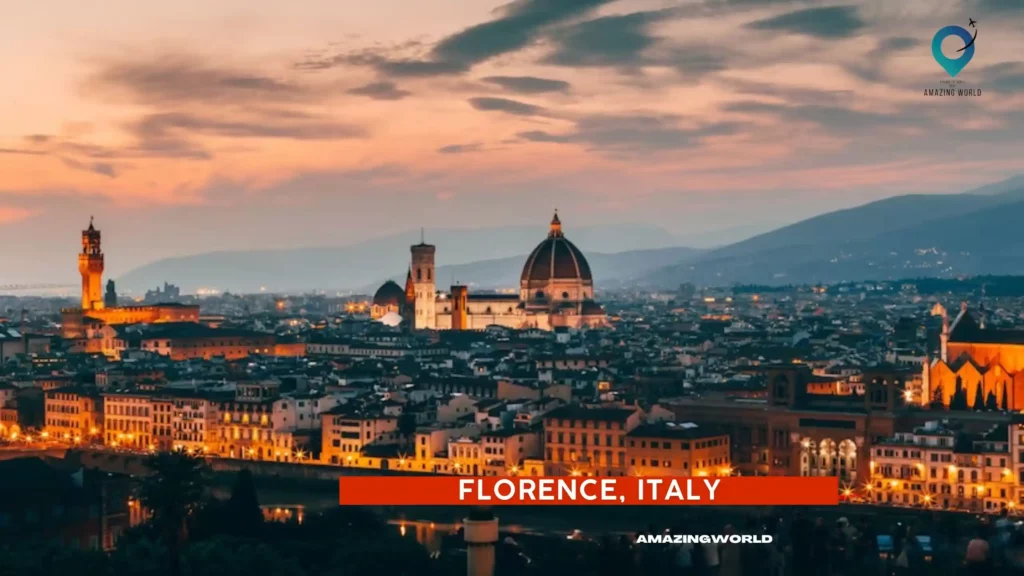
Location:
Florence is a city in central Italy, located in the Tuscany region. It is the capital city of the province of Florence and is situated on the banks of the Arno River.
Known for:
Florence is known for its rich history and stunning architecture, particularly its beautiful Renaissance-era buildings and art. It is also famous for its shopping, with many high-end fashion boutiques and leather goods shops.
Culture:
Florence is a cultural hub, with many museums, galleries, and theaters showcasing local and international talent. The city is particularly famous for its art, with many famous works by Renaissance masters such as Leonardo da Vinci, Michelangelo, and Botticelli on display.
Nightlife:
Florence has a vibrant nightlife scene, with many bars, nightclubs, and restaurants catering to all tastes. The city is particularly famous for its wine bars, which serve up delicious Italian wines and small plates of food.
Food:
Florence is a food lover’s paradise, with many restaurants serving up traditional Tuscan cuisine. The city is particularly famous for its steak, known as bistecca alla Fiorentina, as well as its gelato and pastries.
Safety:
Florence is generally a safe city, but it is important to be aware of pickpockets and other petty crimes, especially in crowded tourist areas. It is also important to be cautious when using public transportation, particularly at night.
The best mode of transportation:
The best way to get around Florence is on foot, as many of the city’s attractions are located within easy walking distance of each other. However, if you need to travel further afield, the city also has an extensive public transportation system, which includes buses and trams.
If You are planning to visit the USA and looking for the best flight booking from your destination then, So we recommend you book your flight from Qatar Airways or Emirates
Attractions:
Florence has many attractions to offer, including the Uffizi Gallery, the Florence Cathedral, and the Ponte Vecchio. Other popular destinations include the Boboli Gardens and the Palazzo Pitti.
Local customs:
Italian culture places a strong emphasis on family and socializing, and it is common to see large groups of people socializing in cafes and piazzas. It is also important to dress appropriately when visiting churches and other religious sites.
Some travel tips:
- Be sure to try some traditional Tuscan dishes, such as ribollita and pappa al pomodoro.
- Visit some of the city’s many historic cafes, such as the Caffe Gilli, which has been serving customers since 1733.
- Take a walking tour of the city to learn more about its rich history and culture.
- Be cautious when using public transportation, especially at night.
- Consider taking a day trip to the nearby Tuscan countryside, which is dotted with picturesque towns and vineyards.
9. Helsinki, Finland

Location:
Helsinki is the capital and largest city of Finland, located in the southern part of the country on the shore of the Gulf of Finland.
Known for:
Helsinki is known for its stunning natural beauty, cutting-edge design, and innovative food scene. The city is also famous for its architecture, particularly its Art Nouveau and modernist buildings.
Culture:
Helsinki is a cultural hub, with many museums, galleries, and theaters showcasing local and international talent. The city is particularly famous for its music scene, with many famous musicians and bands hailing from the city.
Nightlife:
Helsinki has a vibrant nightlife scene, with many bars, nightclubs, and restaurants catering to all tastes. The city is particularly famous for its craft beer scene, with many local breweries serving up delicious Finnish beers.
Food:
Helsinki is a food lover’s paradise, with many restaurants serving up traditional Finnish cuisine. The city is particularly famous for its seafood, as well as its reindeer dishes and hearty stews.
Safety:
Helsinki is generally a safe city, with low levels of crime. However, it is important to be aware of pickpockets and other petty crimes, especially in crowded tourist areas.
The best mode of transportation:
The best way to get around Helsinki is on foot or by bike, as many of the city’s attractions are located within easy walking or cycling distance of each other. The city also has an extensive public transportation system, which includes buses, trams, and a metro system.
Attractions:
Helsinki has many attractions to offer, including the Helsinki Cathedral, the Market Square, and the Suomenlinna Fortress. Other popular destinations include the Design District and the Temppeliaukio Church.
Local customs:
Finnish culture places a strong emphasis on nature, and it is common to see people spending time outdoors, even in the winter. It is also important to respect personal space and privacy, as Finnish people tend to be reserved and introverted.
Some travel tips:
- Be sure to try some traditional Finnish dishes, such as salmon soup and Karelian pastries.
- Visit some of the city’s many saunas, which are an important part of Finnish culture.
- Take a ferry to the nearby islands, such as Suomenlinna and Seurasaari, which offer a peaceful escape from the city.
- Dress warmly in the winter, as temperatures can drop below freezing.
10. Lisbon, Portugal
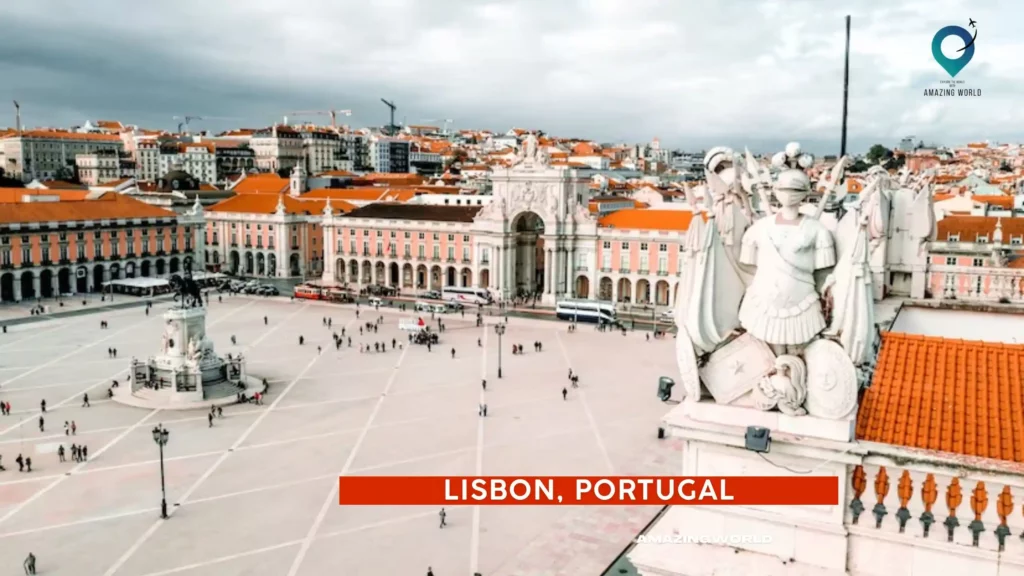
Location:
Lisbon is the capital and largest city of Portugal, located on the western coast of the country.
Known for:
Lisbon is known for its historic architecture, charming neighborhoods, and delicious food. The city is also famous for its Fado music, a traditional style of Portuguese music that is often played in local restaurants and bars.
Culture:
Lisbon has a rich cultural heritage, with many museums, galleries, and theaters showcasing local and international talent. The city is particularly famous for its art scene, with many famous Portuguese artists hailing from the city.
Nightlife:
Lisbon has a vibrant nightlife scene, with many bars, nightclubs, and restaurants catering to all tastes. The city is particularly famous for its wine bars, which offer a wide selection of Portuguese wines.
Food:
Lisbon is a food lover’s paradise, with many restaurants serving up traditional Portuguese cuisine. The city is particularly famous for its seafood, as well as its pastries, such as the famous pastel de nata.
Safety:
Lisbon is generally a safe city, with low levels of crime. However, it is important to be aware of pickpockets and other petty crimes, especially in crowded tourist areas.
The best mode of transportation:
The best way to get around Lisbon is on foot or by tram, as many of the city’s attractions are located within easy walking or tram distance of each other. The city also has an extensive public transportation system, which includes buses, metro, and trains.
Attractions:
Lisbon has many attractions to offer, including the historic district of Alfama, the iconic Belém Tower, and the São Jorge Castle. Other popular destinations include the trendy neighborhood of Bairro Alto and the vibrant Mercado da Ribeira food market.
Local customs:
Portuguese culture places a strong emphasis on family and friends, and it is common to see people spending time together in public spaces. It is also important to respect local customs and traditions, such as tipping in restaurants and not wearing beachwear in the city center.
Some travel tips:
- Take a ride on one of the city’s famous yellow trams, such as Tram 28, which takes you through some of Lisbon’s most picturesque neighborhoods.
- Visit the nearby town of Sintra, which is known for its beautiful castles and palaces.
- Enjoy a Fado performance at one of the many local restaurants or bars.
- Try some of the local specialties, such as pastel de nata, bacalhau (salt cod), and vinho verde (young green wine).
11. London, England
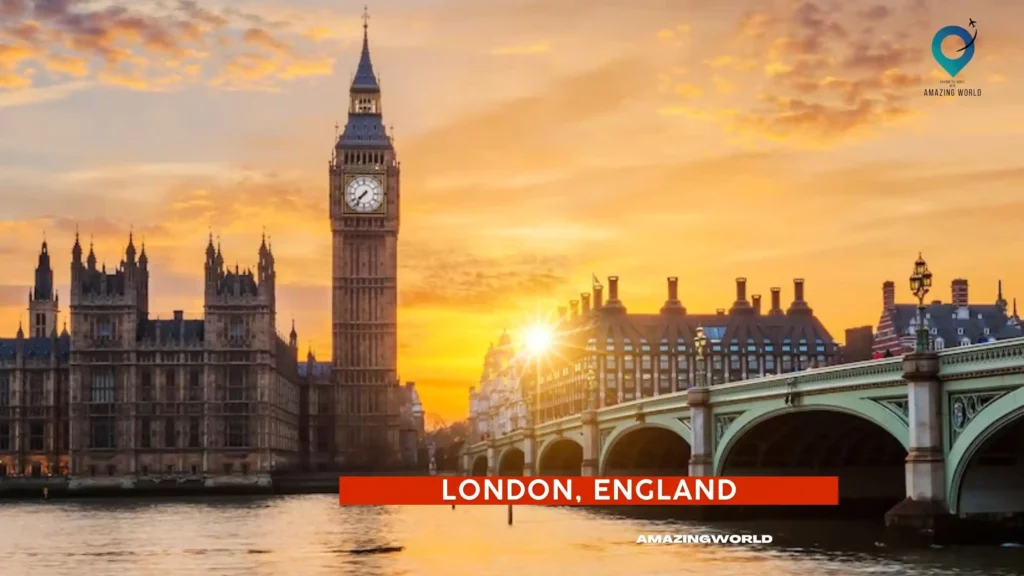
Location:
London is the capital and largest city of England, located in the southeast of the country.
Known for:
London is known for its rich history, iconic landmarks, and vibrant cultural scene. The city is home to many world-famous attractions, such as Buckingham Palace, the Tower of London, and the London Eye.
Culture:
London has a diverse and vibrant cultural scene, with many museums, galleries, and theaters showcasing local and international talent. The city is particularly famous for its theater scene, with many famous productions staged in the West End.
Nightlife:
London has a lively and varied nightlife scene, with many bars, nightclubs, and pubs catering to all tastes. The city is particularly famous for its music scene, with many famous bands and musicians hailing from the city.
Food:
London is a food lover’s paradise, with many restaurants serving up a diverse range of cuisines from around the world. The city is particularly famous for its traditional British dishes, such as fish and chips, pie and mash, and roast beef.
Safety:
London is generally a safe city, with a low crime rate. However, it is important to be aware of pickpockets and other petty crimes, especially in crowded tourist areas.
The best mode of transportation:
The best way to get around London is on the extensive public transportation system, which includes buses, trains, and the famous London Underground (also known as the Tube). Taxis and Uber are also widely available.
If You are planning to visit the USA and looking for the best flight booking from your destination then, So we recommend you book your flight from Qatar Airways or Emirates
Attractions:
London has many attractions to offer, including the British Museum, the National Gallery, and the Tate Modern art museum. Other popular destinations include the South Bank, Covent Garden, and the vibrant markets of Camden and Portobello.
Local customs:
British culture places a strong emphasis on politeness and manners, and it is important to be respectful of others at all times. Tipping is also customary in restaurants and cafes.
Some travel tips:
- Consider purchasing an Oyster Card for public transportation to save money on fares.
- Visit some of the city’s free museums and galleries, such as the British Museum and the National Gallery.
- Take a stroll through one of the city’s many parks, such as Hyde Park or Greenwich Park.
- Try some of the local specialties, such as fish and chips, a traditional English breakfast, and a pint of beer at a local pub.
12. Madrid, Spain
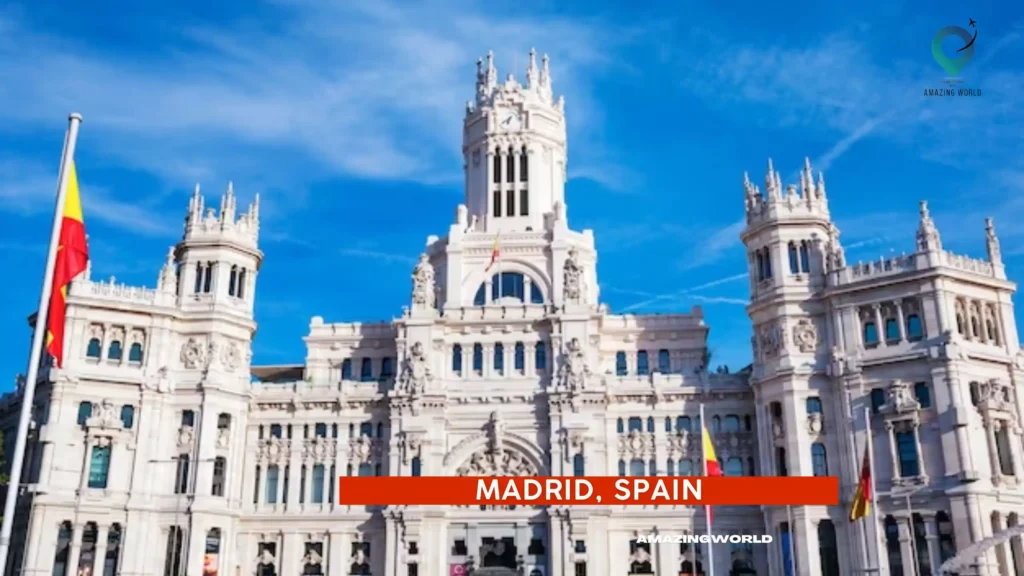
Location:
Madrid is the capital and largest city of Spain, located in the center of the country.
Known for:
Madrid is known for its rich history, stunning architecture, and vibrant cultural scene. The city is particularly famous for its art museums, such as the Prado Museum, which houses an impressive collection of Spanish and European art.
Culture:
Madrid has a lively and diverse cultural scene, with many theaters, cinemas, and concert halls showcasing local and international talent. The city is particularly famous for its flamenco music and dance, which can be experienced in many venues throughout the city.
Nightlife:
Madrid has a legendary nightlife scene, with many bars, nightclubs, and pubs staying open until the early hours of the morning. The city is particularly famous for its tapas bars, where locals gather to socialize and sample small plates of delicious Spanish cuisine.
Food:
Madrid is a food lover’s paradise, with many restaurants serving up a diverse range of cuisines from around Spain and the world. The city is particularly famous for its traditional Spanish dishes, such as paella, tortilla española, and churros with hot chocolate.
Safety:
Madrid is generally a safe city, but like any large city, it’s important to take certain precautions to ensure your safety. Be aware of your surroundings, especially in crowded areas, and keep your belongings close to you to avoid pickpocketing.
Avoid walking alone late at night in less populated areas, and stick to well-lit and busy streets. When using public transportation, keep an eye on your belongings and be cautious of anyone who seems suspicious. If you encounter any problems, seek assistance from the police or tourist information center.
The best mode of transportation:
The best way to get around Madrid is through the extensive public transportation system, which includes buses, trains, and the metro. Taxis and Uber are also widely available.
Attractions:
Madrid has many attractions to offer, including the Royal Palace, the Puerta del Sol, and the Retiro Park. Other popular destinations include the vibrant neighborhoods of Malasaña and Chueca, and the bustling markets of San Miguel and San Antón.
Local customs:
Spanish culture places a strong emphasis on family and socializing, and it is common to spend time with friends and family over long meals and drinks. Tipping is also customary in restaurants and cafes.
Some travel tips:
- Visit some of the city’s free museums and galleries, such as the Reina Sofia Museum, which houses an impressive collection of contemporary art.
- Take a stroll through the city’s many parks and gardens, such as the Retiro Park or the Sabatini Gardens.
- Try some of the local specialties, such as churros with hot chocolate, a refreshing glass of sangria, or a plate of delicious tapas.
- Be sure to take a siesta (midday nap) to fully embrace the Spanish lifestyle.
13. Munich, Germany
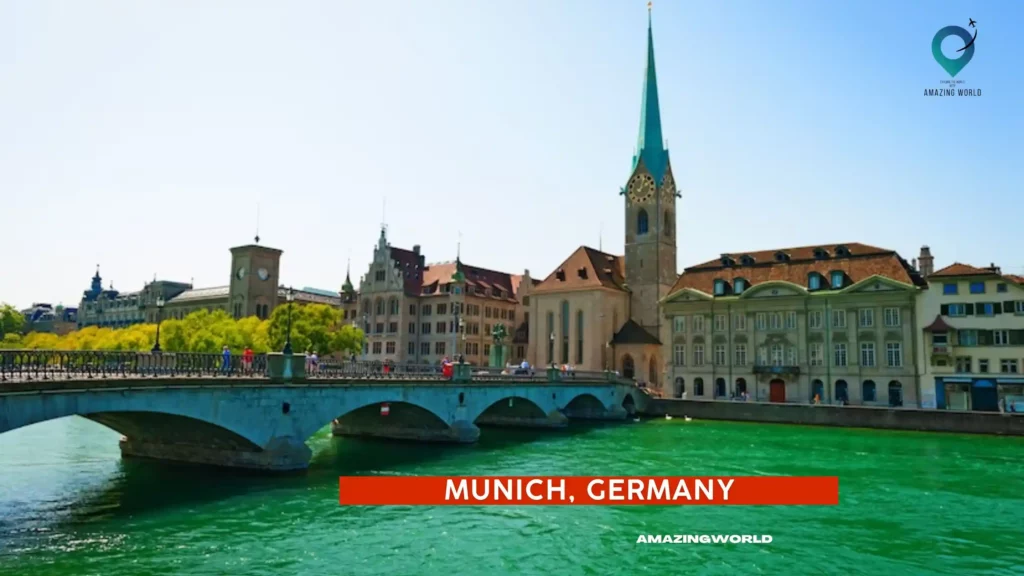
Location:
Munich is located in southern Germany, near the Alps and close to the border with Austria.
Known for:
Munich is known for its stunning architecture, world-class museums, and its famous Oktoberfest beer festival.
Culture:
Munich has a rich cultural heritage, with numerous museums and galleries showcasing everything from classical art to contemporary installations. The city is also home to numerous theaters and concert halls, and the famous Bavarian State Opera.
Nightlife:
Munich has a vibrant nightlife scene, with everything from traditional beer halls to trendy cocktail bars and nightclubs.
Food:
Munich is famous for its traditional Bavarian cuisine, which includes dishes like sausages, sauerkraut, and pretzels. The city also has a growing food scene, with numerous international restaurants and trendy cafes.
Safety Ranking:
Munich is considered a safe city, with a low crime rate. However, it’s always important to take standard safety precautions, such as keeping an eye on your belongings in crowded areas.
The best mode of transportation:
Munich has an excellent public transportation system, including a comprehensive network of trains, trams, and buses. The city also has an extensive bike-sharing system and is very bike-friendly.
Attractions:
Some of Munich’s top attractions include the stunning Nymphenburg Palace, the world-renowned Bavarian State Opera, the Deutsches Museum of Science and Technology, and the iconic Frauenkirche Cathedral.
Local customs:
Munich is known for its traditional Bavarian culture, which includes the lederhosen and dirndl costumes, as well as its love of beer and hearty food.
Some travel tips:
- Be sure to visit during Oktoberfest if you want to experience Munich’s famous beer festival, but be prepared for large crowds.
- Take a bike tour to explore the city and its surrounding areas.
- Don’t miss the chance to try traditional Bavarian cuisine, but be prepared for large portions!
14. Oslo, Norway
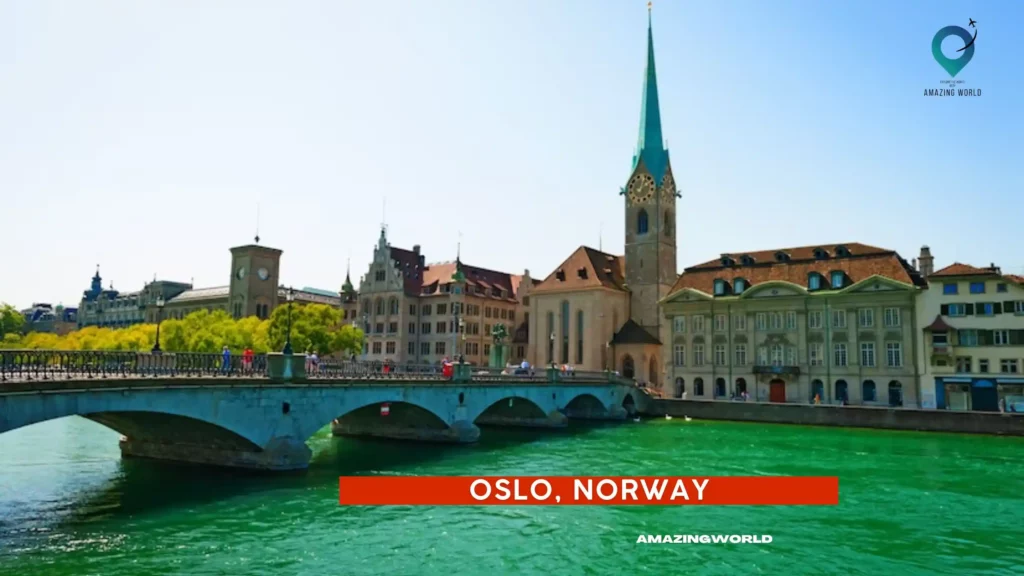
Location:
Oslo is the capital city of Norway and is located in the southeastern part of the country, at the head of the Oslofjord.
Known for:
Oslo is known for its stunning natural scenery, including the nearby forests and mountains, as well as its modern architecture and world-class museums.
Culture:
Oslo has a vibrant cultural scene, with numerous museums and galleries showcasing everything from contemporary art to ancient Viking artifacts. The city is also home to the Norwegian National Opera and Ballet.
Nightlife:
Oslo has a vibrant nightlife scene, with everything from trendy cocktail bars to lively nightclubs. However, alcohol can be expensive due to Norway’s high taxes.
Food:
Oslo has a growing food scene, with numerous international restaurants and trendy cafes. Norwegian cuisine features a lot of seafood, including salmon, cod, and herring, as well as traditional dishes like lefse and rakfisk.
World Safety Ranking:
Oslo is considered one of the safest cities in the world, with a low crime rate and excellent public safety infrastructure.
The best mode of transportation:
Oslo has an excellent public transportation system, including buses, trams, and trains. The city also has a bike-sharing system and is very bike-friendly.
Attractions:
Some of Oslo’s top attractions include the stunning Vigeland Sculpture Park, the Munch Museum, which houses many of the works of famous Norwegian artist Edvard Munch, and the Opera House, which offers stunning views of the city and the fjord.
Local customs:
Norwegians value simplicity, honesty, and respect for others. They also have a strong connection to their natural surroundings, with outdoor activities like hiking and skiing being very popular.
Some travel tips:
- Visit the famous Viking Ship Museum to learn about Norway’s seafaring history.
- Take a ferry to the nearby islands for some stunning coastal views.
- Be prepared for expensive prices due to Norway’s high cost of living.
15. Paris, France
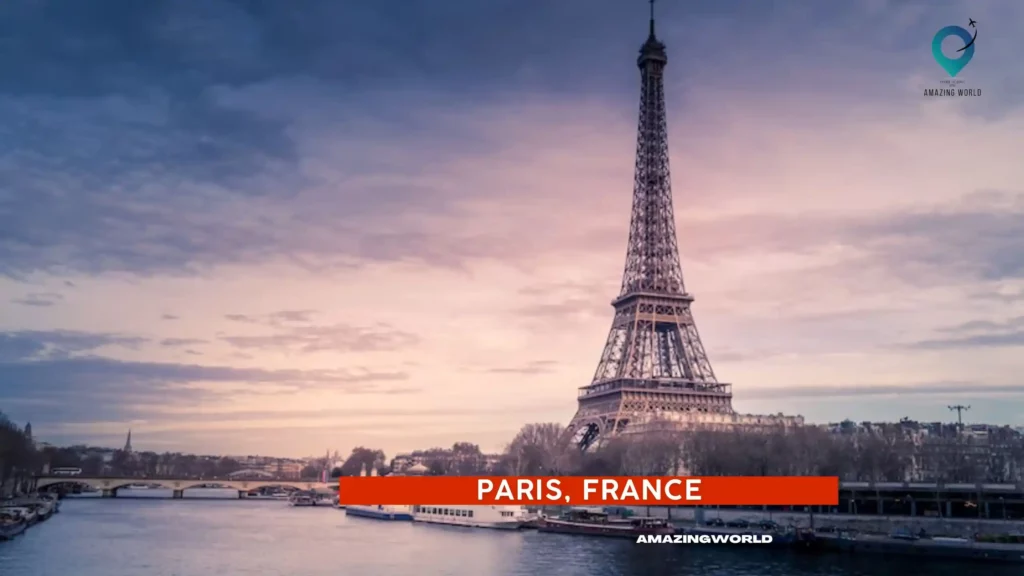
Location:
Paris is the capital city of France, located in the north-central part of the country, on the banks of the river Seine.
Known for:
Paris is known for its iconic landmarks and attractions, including the Eiffel Tower, Notre Dame Cathedral, and the Louvre Museum. It is also renowned for its fashion, art, and culinary scenes.
Culture:
Paris is one of the world’s most culturally rich cities, with a long history of art, literature, music, and philosophy. The city is home to numerous museums, galleries, and theaters, including the famous Moulin Rouge Cabaret.
Nightlife:
Paris has a lively nightlife scene, with a wide range of bars, clubs, and live music venues. It is especially famous for its jazz clubs, which were popularized in the 1920s and 30s.
Food:
Paris is renowned for its food and wine, with numerous Michelin-starred restaurants and gourmet markets. French cuisine features many classic dishes like escargots, coq au vin, and steak frites.
Safety Ranking:
Paris has a moderate crime rate, with some areas known for pickpocketing and petty theft. However, the city has a strong police presence and is generally safe for tourists.
The best mode of transportation:
Paris has an extensive public transportation system, including buses, trains, and the famous Metro subway system. Walking and biking are also popular ways to get around the city.
Attractions:
Some of Paris’s top attractions include the Eiffel Tower, the Louvre Museum, the Champs-Élysées shopping district, and the Palace of Versailles.
Local customs:
French culture values politeness, elegance, and style. It is customary to greet people with a kiss on both cheeks, and to dress well when going out in public.
Some travel tips:
- Visit the city’s numerous parks and gardens, including the famous Tuileries Garden and Luxembourg Gardens.
- Avoid peak tourist season (June-August) to avoid crowds and high prices.
- Be aware of potential scams and pickpocketing in busy tourist areas, and keep an eye on your belongings at all times.
16. Prague, Czech Republic
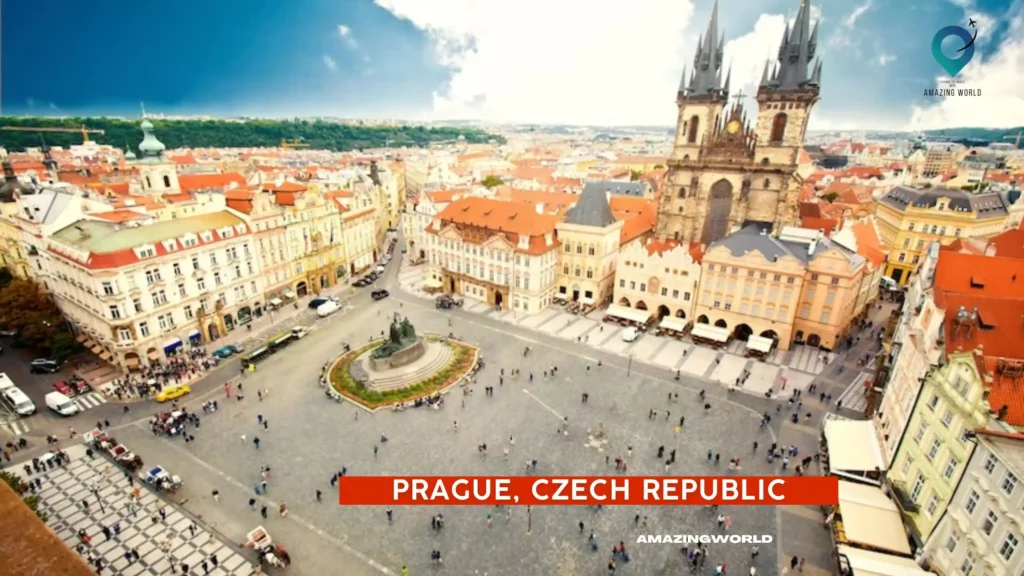
Location:
Prague is located in the heart of Europe, in the Czech Republic.
Known for:
Prague is known for its stunning architecture, beautiful bridges over the Vltava River, rich history, and cultural heritage.
Culture:
Prague has a rich cultural scene with many theaters, concert halls, and museums. It is famous for its classical music concerts, opera, and ballet performances.
Nightlife:
Prague has a vibrant nightlife with many bars, clubs, and live music venues. The city is particularly famous for its beer culture, with many breweries and pubs serving some of the best beers in the world.
Food:
Czech cuisine is hearty and delicious, with traditional dishes such as goulash, roast pork with dumplings, and fried cheese. Prague also has a thriving food scene, with many restaurants serving international cuisine.
World Safety Ranking:
Prague is generally considered a safe city for travelers, with a low crime rate.
The best mode of transportation:
The best way to get around Prague is on foot or by public transportation. The city has an extensive public transportation network, including trams, buses, and a metro system.
Attractions:
Some of the top attractions in Prague include the Charles Bridge, Prague Castle, Old Town Square, and the Jewish Quarter.
Local customs:
When visiting Prague, it is important to be respectful of the local customs and culture. Dress modestly when visiting churches and other religious sites, and be mindful of your behavior in public spaces.
Some travel tips:
- Be sure to try some of the local Czech beers, which are some of the best in the world.
- Also, be prepared for crowds, especially in the summer months when Prague is a popular tourist destination.
- Finally, be aware of tourist scams, such as overcharging at restaurants or taxis.
If You are planning to visit the USA and looking for the best flight booking from your destination then, So we recommend you book your flight from Qatar Airways or Emirates
17. Reykjavik, Iceland
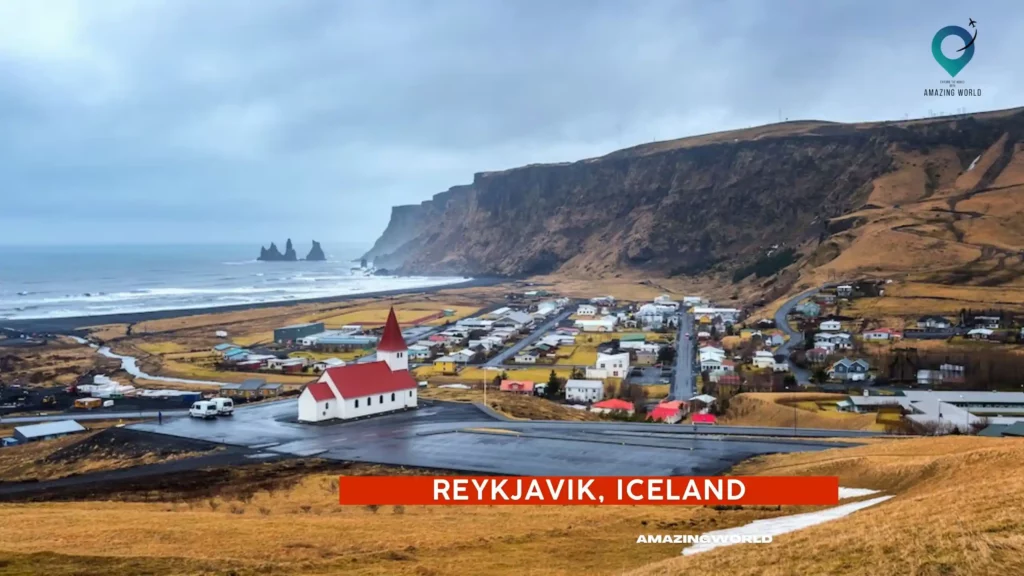
Location:
Reykjavik is the capital and largest city of Iceland, located on the country’s southwest coast.
Known for:
Reykjavik is known for its unique and stunning natural beauty, including geysers, hot springs, glaciers, and waterfalls. It is also known for its vibrant cultural scene, with many museums, art galleries, and music festivals.
Culture:
Icelandic culture is rich and diverse, with a strong literary tradition, a thriving music scene, and unique cuisine. Reykjavik has many cultural attractions, including the National Museum of Iceland and the Harpa Concert Hall.
Nightlife:
Reykjavik has a thriving nightlife scene, with many bars, clubs, and live music venues. The city is particularly famous for its weekend bar crawls known as “runtur”, where locals and tourists alike gather to drink and socialize.
Food:
Icelandic cuisine is unique and delicious, with traditional dishes such as fermented shark, lamb stew, and skyr, a type of yogurt.
Reykjavik has a thriving food scene, with many restaurants serving both traditional Icelandic cuisine and international dishes.
World Safety Ranking:
Iceland is consistently ranked as one of the safest countries in the world, with a low crime rate and an excellent healthcare system.
The best mode of transportation:
The best way to get around Reykjavik is on foot or by public transportation. The city has an extensive bus network, and many attractions are within walking distance.
Attractions:
Some of the top attractions in Reykjavik include the Blue Lagoon, the Golden Circle, the Northern Lights, and the Hallgrimskirkja Church.
Local customs:
Icelandic culture values respect for nature, so it is important to be mindful of the environment when visiting. It is also common to remove your shoes when entering someone’s home and to be respectful of personal space and privacy.
Some travel tips:
Be sure to bring warm clothing, as temperatures can be chilly even in the summer months. Also, be aware that prices in Iceland can be high, so budget accordingly. Finally, be prepared for changing weather conditions and unpredictable road conditions if you plan to drive outside of Reykjavik.
18. Rome, Italy
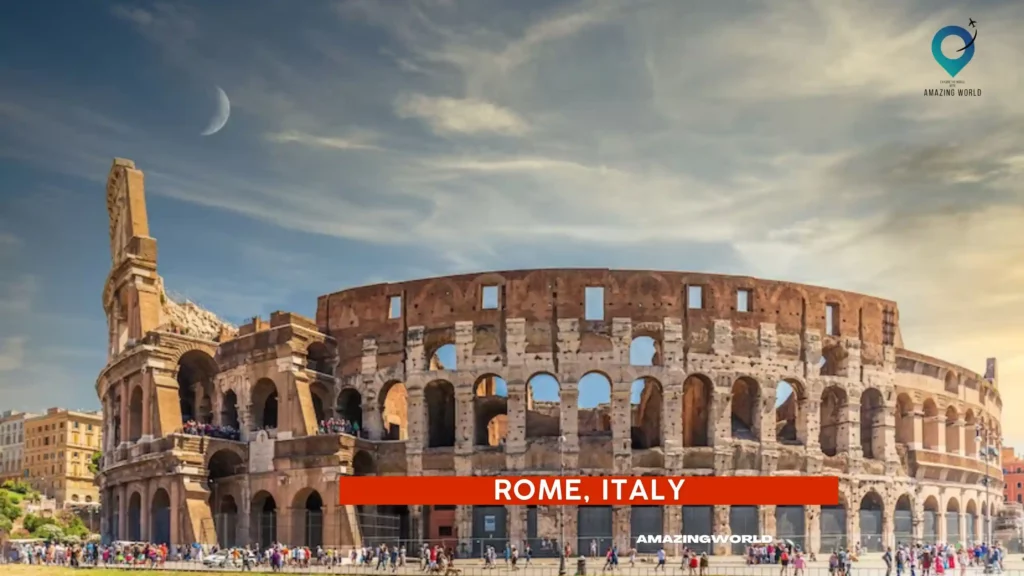
Location: Rome is located in the central-western portion of Italy, along the Tiber River.
Known for: Rome is known for its rich history, stunning architecture, delicious food, and vibrant street life. It is home to iconic landmarks such as the Colosseum, the Vatican City, and the Trevi Fountain.
Culture: Rome is a city steeped in culture, with a wealth of museums, galleries, and historic sites to explore. It has a strong tradition of art, music, and cinema, and is renowned for its fashion industry.
Nightlife: Rome has a lively nightlife scene, with a variety of bars, clubs, and music venues to suit all tastes. The city’s piazzas are also popular gathering spots for locals and tourists alike.
Food: Roman cuisine is famous for its hearty and flavorful dishes, such as pasta carbonara, saltimbocca alla romana, and pizza bianca. There are also plenty of streets food options to try, including supplì (fried rice balls), porchetta (roast pork), and gelato.
Safety Ranking: Rome is generally considered a safe city for tourists, but like any big city, it is important to be aware of your surroundings and take precautions against pickpocketing and other petty crime.
The best mode of transportation: Rome has an extensive public transportation network, including buses, trams, and metro lines. Walking is also a great way to explore the city, as many of the main attractions are located close together.
Attractions: Rome is home to countless attractions, including the Colosseum, the Roman Forum, the Pantheon, the Vatican City, and the Trevi Fountain. Other popular sites include the Spanish Steps, the Piazza Navona, and the Villa Borghese.
Local customs: Romans are generally friendly and welcoming, but it is important to be respectful of local customs and traditions. Dress modestly when visiting religious sites, and be aware that dining out is a leisurely affair in Italy.
Some travel tips: It is best to avoid driving in Rome, as traffic can be chaotic and parking is limited. Instead, rely on public transportation or walk.
It is also a good idea to purchase tickets for popular attractions in advance to avoid long lines. Finally, be prepared for the heat if you are visiting in the summer months, and carry plenty of water and sunscreen.
19. Salzburg, Austria

Location: Salzburg is located in western Austria, close to the border of Germany.
Known for: Salzburg is known for its baroque architecture, as well as being the birthplace of Mozart.
Culture: Salzburg has a rich cultural history and is home to several museums, galleries, and festivals, including the Salzburg Festival, which celebrates classical music and theater.
Nightlife: Salzburg has a lively nightlife scene, with plenty of bars, clubs, and music venues to choose from.
Food: Austrian cuisine is hearty and flavorful, with dishes like schnitzel, goulash, and strudel being popular choices.
Safety Ranking: Salzburg is generally considered a safe city for travelers, with low rates of violent crime.
The best mode of transportation: Salzburg is a fairly small city, and many of the main attractions can be reached on foot. However, there is also a good public transportation system, including buses and trams.
Attractions: Some of the top attractions in Salzburg include the Hohensalzburg Fortress, the Salzburg Cathedral, and Mozart’s birthplace.
Local customs: Austrians are known for being polite and formal, and it is customary to greet people with a handshake.
Some travel tips: Salzburg can get crowded during peak tourist season, so it’s a good idea to book accommodations and tours in advance. It’s also a good idea to bring comfortable shoes, as there are many hills and stairs in the city.
Finally, be sure to try some of the local specialties, like schnitzel and Mozartkugel chocolates!
20. Stockholm, Sweden
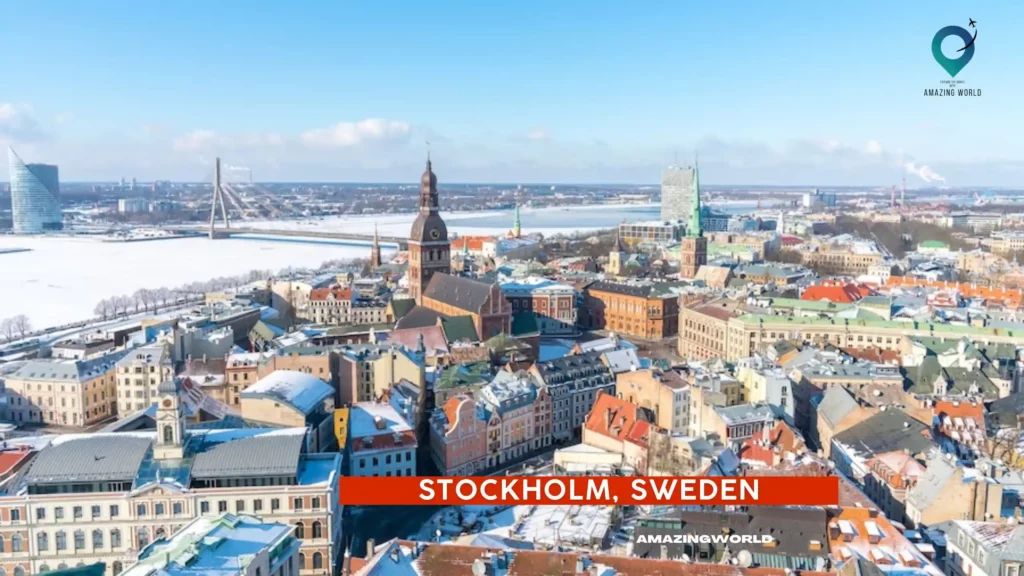
Location: Stockholm is the capital city of Sweden and is located on the east coast of the country.
Known for: Stockholm is known for its beautiful scenery, rich history, and charming architecture.
Culture: Stockholm has a vibrant cultural scene with numerous museums, art galleries, and theaters showcasing both local and international talent.
Nightlife: Stockholm has a lively nightlife with plenty of bars, nightclubs, and restaurants to choose from.
Food: Swedish cuisine is diverse and delicious, with traditional dishes like meatballs, smoked salmon, and herring being popular choices.
World Safety Ranking: Stockholm is known for being one of the safest cities in the world, with a low crime rate and a well-maintained public transport system.
The best mode of transportation: The best mode of transportation in Stockholm is the city’s public transport system, which includes buses, trains, and the metro.
Attractions: Some of the top attractions in Stockholm include the Royal Palace, the Vasa Museum, and the old town of Gamla Stan.
Local customs: Swedes are known for being polite and reserved, so it’s important to respect personal space and avoid being too loud in public places.
Some travel tips: Visitors should be prepared for the high cost of living in Stockholm, and it’s a good idea to book accommodations and activities in advance to save money.
Also, be sure to dress appropriately for the weather, as it can be quite cold and snowy in the winter months.
21. Venice, Italy
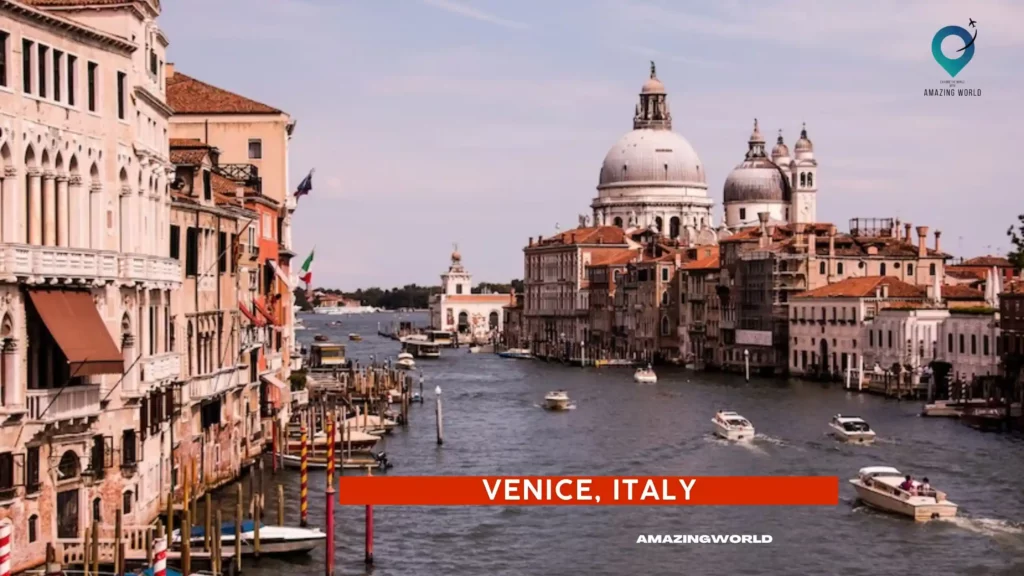
Location: Venice is a city in northeastern Italy, built on a group of islands connected by over 400 bridges.
Known for: Venice is known for its romantic waterways, stunning architecture, and rich history.
Culture: Venice has a rich cultural heritage, with art and music playing a prominent role in the city’s identity. The Venice Biennale is one of the world’s most prestigious contemporary art exhibitions.
Nightlife: Venice has a lively nightlife scene, with plenty of bars and nightclubs to choose from. However, it’s important to note that many of these establishments can be quite expensive.
Food: Venetian cuisine is known for its seafood dishes, including squid ink pasta and grilled octopus. The city is also famous for its Cicchetti, which are small, flavorful snacks that are typically served with wine.
World Safety Ranking: Venice is generally considered a safe city for tourists, but visitors should be aware of pickpocketing and other petty crimes.
The best mode of transportation: The best way to get around Venice is by water taxi or vaporetto (water bus), as cars are not allowed in the city center.
If You are planning to visit the USA and looking for the best flight booking from your destination then, So we recommend you book your flight from Qatar Airways or Emirates
Attractions: Some of the top attractions in Venice include St. Mark’s Basilica, the Doge’s Palace, and the Rialto Bridge.
Local customs: Venetians are proud of their city and its heritage, so it’s important to be respectful of local customs and traditions. Visitors should also avoid feeding the pigeons in St. Mark’s Square, as it’s illegal and can result in a fine.
Some travel tips: Venice can be quite crowded, especially during peak tourist season, so it’s a good idea to visit popular attractions early in the morning or later in the evening to avoid crowds. Additionally, visitors should be prepared for high prices, especially for accommodations and meals in the city center.
22. Vienna, Austria
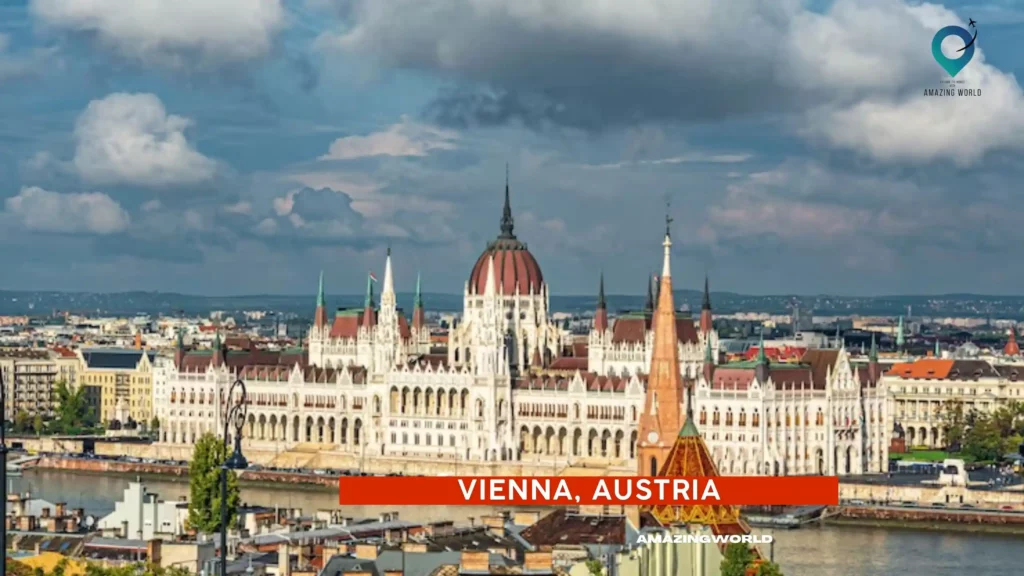
Location:
Vienna is located in the northeastern part of Austria, near the border of Slovakia.
Known for:
Vienna is known for its rich cultural heritage, imperial history, classical music, and stunning architecture.
Culture:
Vienna is famous for its contributions to the arts, including classical music, opera, and theater. The city is home to some of the world’s most famous cultural institutions, such as the Vienna State Opera and the Vienna Philharmonic Orchestra.
Nightlife:
Vienna offers a diverse and vibrant nightlife scene, with everything from trendy bars and nightclubs to traditional wine taverns and pubs.
Food:
Viennese cuisine is known for its delicious pastries, such as the famous Sachertorte and apple strudel. The city is also famous for its coffee culture and traditional dishes, such as Wiener Schnitzel and Tafelspitz.
Safety Ranking:
Vienna is considered to be one of the safest cities in the world, with a low crime rate and an efficient police force.
The best mode of transportation:
Vienna has an excellent public transportation system, including buses, trams, and subways. The best way to get around the city is by using the Vienna Card, which gives you unlimited access to public transportation and discounts on attractions.
If You are planning to visit the USA and looking for the best flight booking from your destination then, So we recommend you book your flight from Qatar Airways or Emirates
Attractions:
Vienna is home to many famous attractions, such as the Schönbrunn Palace, St. Stephen’s Cathedral, and the Hofburg Palace. The city is also famous for its museums, including the Kunsthistorisches Museum and the Albertina Museum.
Local customs:
Vienna has a rich and diverse cultural heritage, with many local customs and traditions. Some of the most important customs include the Viennese Ball season, the Heurigen (traditional wine taverns), and the coffee house culture.
Some travel tips:
- Be sure to visit the Naschmarkt, Vienna’s largest outdoor market, for delicious food and unique souvenirs.
- If you’re a classical music fan, be sure to attend a concert at one of the city’s famous concert halls, such as the Musikverein or the Konzerthaus.
- Vienna is a great city for cycling, with many dedicated bike paths and bike rental options available.
- Don’t forget to try some of the local Viennese cuisine, such as Wiener Schnitzel and Apfelstrudel, and enjoy a cup of coffee at one of the city’s historic coffee houses.
23. Warsaw, Poland
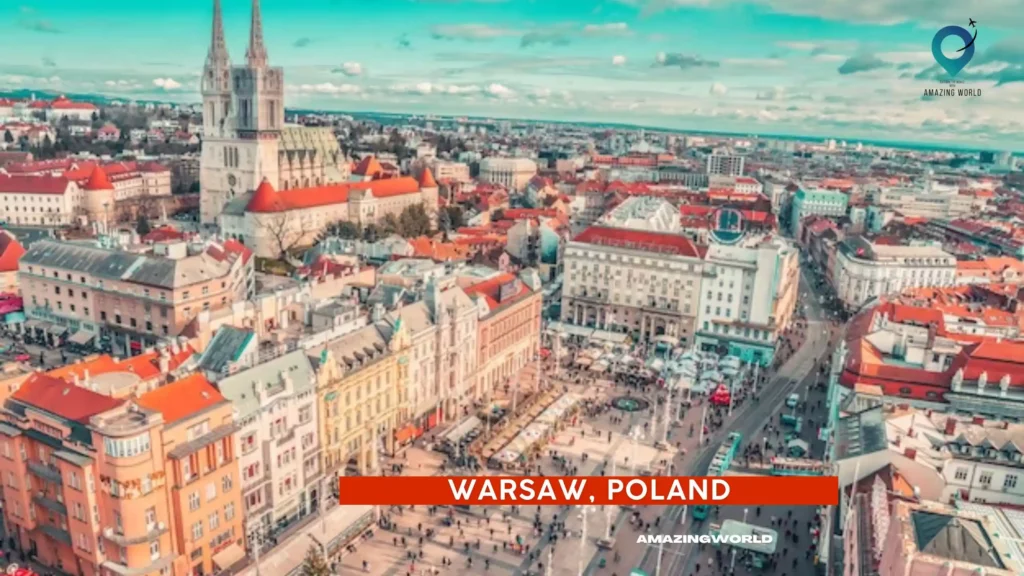
Location: Warsaw is the capital and largest city of Poland, located in the east-central part of the country.
Known for: Warsaw is known for its fascinating history, including its reconstruction after being heavily damaged during World War II, as well as its beautiful parks and cultural attractions.
Culture: Warsaw has a rich cultural scene, with numerous museums, art galleries, and theaters showcasing the city’s history and contemporary art and culture.
Nightlife: Warsaw has a vibrant nightlife scene, with a variety of bars, nightclubs, and live music venues throughout the city.
Food: Polish cuisine is hearty and flavorful, featuring dishes like pierogi (dumplings), kielbasa (sausage), and bigos (a traditional stew). There are also numerous international restaurants and trendy cafes in Warsaw.
Safety Ranking: Warsaw is generally considered a safe city for travelers, with a relatively low crime rate.
The best mode of transportation: Warsaw has an extensive public transportation system, including buses, trams, and a metro system.
Attractions: Some of the top attractions in Warsaw include the historic Old Town, the Palace of Culture and Science, the Warsaw Uprising Museum, and the Lazienki Park and Palace complex.
Local customs: Poles are known for their hospitality, and visitors to Warsaw should expect to be welcomed warmly. It is also customary to remove shoes before entering someone’s home.
Some travel tips: It’s recommended to carry some cash when traveling around Warsaw, as not all places accept credit cards.
Visitors should also be aware of pickpocketing in crowded areas and should take precautions to keep their valuables secure.
24. Zagreb, Croatia

Location: Zagreb is the capital and largest city of Croatia, located in the northwest region of the country.
Known for: Zagreb is known for its rich history and culture, with a mix of medieval, baroque, and modern architecture. It’s also known for its vibrant street art scene, excellent museums, and delicious food.
Culture: Zagreb has a vibrant cultural scene, with numerous museums, galleries, theaters, and music venues. The city is also known for its many festivals throughout the year, including the Zagreb International Film Festival and the Advent in Zagreb Christmas market.
Nightlife: Zagreb has a lively nightlife scene, with a variety of bars, clubs, and music venues catering to different tastes. The city center is particularly lively on weekends, with many people out and about enjoying the nightlife.
Food: Croatian cuisine is heavily influenced by Mediterranean and Eastern European flavors, with a focus on fresh seafood, grilled meats, and hearty stews. In Zagreb, you’ll find a range of restaurants and cafes serving traditional Croatian dishes, as well as international cuisine.
Safety: Zagreb is generally a safe city, with low levels of violent crime. However, travelers should still take precautions to protect their belongings from theft, especially in crowded tourist areas.
The best mode of transportation: The most convenient way to get around Zagreb is by tram or bus. The city has an efficient public transportation system, and you can purchase tickets at kiosks or on board.
Attractions: Some of the top attractions in Zagreb include the historic Upper Town, St. Mark’s Church, the Museum of Broken Relationships, and the Dolac Market.
Local customs: Croatians are generally friendly and welcoming to visitors. It’s polite to greet people with a simple “dobar dan” (good day) or “dobro jutro” (good morning), and to say “hvala” (thank you) when someone does something for you.
Some travel tips: Be sure to bring comfortable shoes for walking around the city, as many of the top attractions are located in the hilly Upper Town. If you’re traveling in the summer, be prepared for hot temperatures and humidity. And don’t miss out on trying some of the local specialty dishes, such as cevapi (grilled sausages) or strukli (a cheesy pastry).
25. Zurich, Switzerland
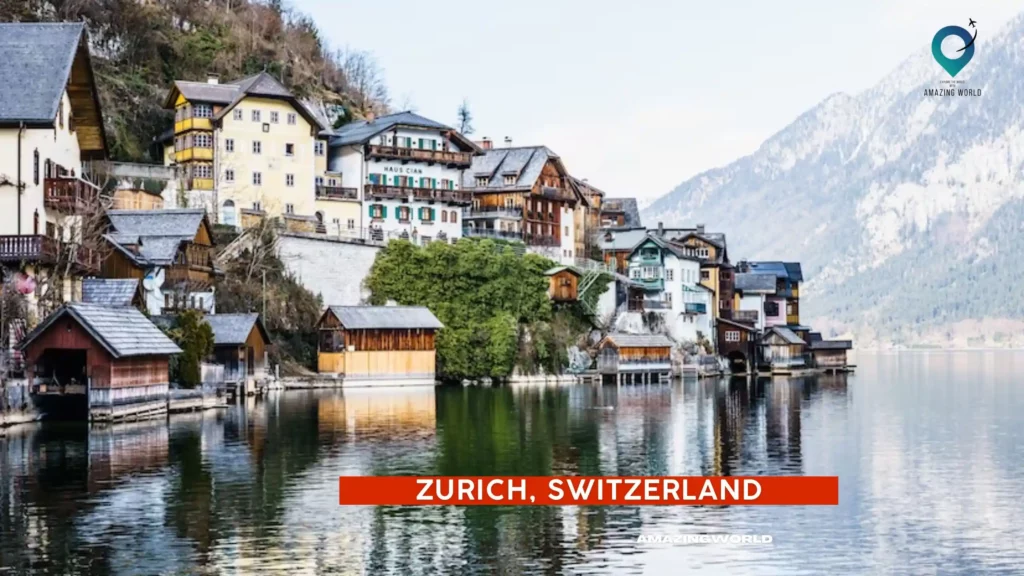
Location: Zurich is a city in Switzerland, located in the north-central part of the country.
Known for: Zurich is known for its stunning scenery, picturesque old town, banking, and finance industry, luxury shopping, and Swiss chocolate.
Culture: Zurich has a rich cultural scene, with many museums, art galleries, and theaters. The city is also known for its traditional festivals, such as Sechseläuten and the Zurich Film Festival.
Nightlife: Zurich offers a diverse and vibrant nightlife, with a wide range of bars, nightclubs, and music venues. Langstrasse is a popular street for nightlife, with a mix of bars, clubs, and restaurants.
Food: Zurich has a diverse culinary scene, with many restaurants offering traditional Swiss dishes as well as international cuisine. The city is particularly known for its chocolate and cheese.
Safety Ranking: Zurich is considered a very safe city, with a low crime rate and a high standard of living. The city is also known for its cleanliness and efficient public transportation system.
The best mode of transportation: The best way to get around Zurich is by public transportation, which includes trams, buses, and trains. The city also has a bike-sharing program and a ferry service on Lake Zurich.
Attractions: Zurich offers many attractions, including the Old Town, the Swiss National Museum, the Fraumünster Church, and the Kunsthaus Zurich. The city is also a great base for exploring the nearby Swiss Alps.
Local customs: Switzerland has many customs and traditions, such as punctuality, cleanliness, and respect for personal space. In Zurich, it is also customary to greet people with a handshake, and it is considered impolite to be loud or disruptive in public.
Some travel tips:
- Visitors to Zurich should be prepared for high prices, as the city is known for its expensive lifestyle.
- It is also recommended to purchase a Zurich Card, which offers discounts on public transportation and admission to many attractions.
- Additionally, visitors should be aware that Switzerland uses Swiss Francs as its currency, and many shops and restaurants may not accept credit cards.
Some Extra Tips
How can I meet other travelers or locals while traveling solo in Europe?
Meeting other travelers or locals while traveling solo in Europe can be a great way to make new friends, learn about different cultures, and have unique experiences. Here are some ways you can meet other travelers or locals:
Stay in hostels: Hostels are a great place to meet other travelers, as they offer shared accommodations and communal spaces like lounges or kitchens.
Join free walking tours: Many cities offer free walking tours, which can be a great way to meet other travelers and learn about the city.
Attend events and festivals: Look for events or festivals happening in the city you’re visiting and attend them. This is a great way to meet locals and experience the culture.
Use social media: There are many Facebook groups, Instagram accounts, and other social media platforms that connect travelers and locals. Join these groups and connect with other travelers or locals.
Take group tours or activities: Joining a group tour or activity, such as a cooking class or a bike tour, can be a great way to meet other travelers and share experiences.
Hang out in public places: Spend some time in public places such as parks, cafes, or bars, and strike up conversations with locals or other travelers.
How do I navigate public transportation while traveling solo in Europe?
- Navigating public transportation while traveling solo in Europe can be a bit daunting, but it’s a great way to save money and get around efficiently. Here are some tips:
- Research the local transportation system before you arrive. Check the schedules, routes, and fares of buses, trains, trams, and metro systems.
- Consider buying a city transport pass or a travel card that offers unlimited travel for a set price or for a specific period of time.
- Use a transportation app, such as Google Maps or Citymapper, to plan your route, check schedules, and find the closest stations or stops.
- Ask locals for advice or directions. They can provide helpful tips on the best routes, shortcuts, and hidden gems.
- Always keep your ticket or travel card with you and make sure to validate it if required.
- Be aware of your surroundings and keep an eye on your belongings, especially in crowded areas.
- If you’re not comfortable using public transportation, consider other options like taxis, car rentals, or bike rentals.
If You are planning to visit the USA and looking for the best flight booking from your destination then, So we recommend you book your flight from Qatar Airways or Emirates
What are some important safety tips for solo travelers in Europe?
Solo travel can be an incredibly rewarding and fulfilling experience, but it’s important to take safety precautions when traveling alone, especially in unfamiliar places. Here are some important safety tips for solo travelers in Europe:
Research your destination: Before you go, research the destination you’re visiting, including the culture, customs, and any safety concerns. Learn about the areas to avoid and how to get around safely.
Stay in safe accommodations: Book your accommodations in safe and well-lit areas. Consider staying in a hostel or guesthouse with good reviews from other travelers.
Keep your valuables safe: Be aware of pickpockets and keep your valuables, such as your passport, cash, and credit cards, in a secure place. Consider using a money belt or neck wallet.
Stay connected: Let someone know where you are and your itinerary. Stay in touch with friends or family back home, and consider using a travel app that allows them to track your location.
Be aware of your surroundings: Pay attention to your surroundings and avoid risky situations. Trust your instincts and if something doesn’t feel right, move on.
Avoid excessive alcohol consumption: Drinking too much alcohol can impair your judgment and put you at risk. Be aware of your alcohol consumption and drink responsibly.
Learn basic self-defense: Consider taking a self-defense class before your trip to learn basic techniques that could help you defend yourself in an emergency.
How do I deal with language barriers while traveling solo in Europe?
Dealing with language barriers can be a challenge when traveling solo in Europe, but there are several strategies you can use to communicate effectively and navigate your way around:
Learn some basic phrases: Before you go, learn some basic phrases in the local language, such as “hello”, “thank you”, and “excuse me”. This can go a long way in showing respect and making a good impression.
Use translation apps: There are many translation apps available that can help you communicate with locals. Google Translate is a popular option, but there are many others to choose from.
Carry a phrasebook: In addition to using translation apps, consider carrying a phrasebook with you. This can be especially helpful if you’re in a location where you don’t have access to the internet or your phone.
Use non-verbal communication: Sometimes, non-verbal communication can be just as effective as speaking the local language. Use hand gestures, facial expressions, and body language to communicate your needs.
Seek help from locals: Don’t be afraid to ask locals for help. Many people are happy to assist travelers, and they may be able to speak some English or help you find someone who does.
Stay in places with English-speaking staff: When booking accommodations, consider staying in places with English-speaking staff. This can be helpful if you need assistance or have questions.
What is the best time of year to travel solo in Europe?
The best time of year to travel solo in Europe depends on your preferences and the activities you plan to do. Summer months, from June to August, are popular for their warm weather and outdoor festivals, but they can also be crowded and expensive.
Shoulder seasons, from April to May and September to November, offer milder weather, fewer crowds, and cheaper prices.
Winter, from December to March, can be cold but also offers unique winter activities like skiing and Christmas markets.
What are some unique experiences for solo travelers in Europe?
There are plenty of unique experiences for solo travelers in Europe. Here are some suggestions:
- Take a cooking class in Italy or France to learn how to make local dishes.
- Attend a music festival such as Tomorrowland in Belgium or Sziget in Hungary.
- Go on a guided hiking or biking tour in the Swiss Alps.
- Take a hot air balloon ride over Cappadocia in Turkey.
- Explore Iceland’s glaciers and hot springs on a guided tour.
- Join a walking tour of street art in Berlin or Lisbon.
- Attend a traditional cultural event such as a flamenco show in Spain or a medieval festival in Germany.
- Go on a wildlife safari in Scandinavia to see the Northern Lights and other wildlife.
- Take a boat tour of the fjords in Norway or the canals in Venice.
- Visit a local winery in Portugal or Spain and participate in a wine-tasting tour.
Conclusion.
Solo travel in Europe can be a thrilling and rewarding experience. With so many amazing destinations to choose from, it can be difficult to decide where to go. However, by considering factors such as safety, culture, food, and attractions, solo travelers can make the most of their trip. With proper planning and a willingness to step outside one’s comfort zone, solo travel in Europe can lead to unforgettable memories and experiences.
How much did you like Our detailed 25 Best Places in Europe for Solo Travel | Tips & Safety? Review Also, please share these Blogs with your friends on social media.
Recommended

Meet David Hoper, a passionate travel Blog writer with 7+ years of experience in travel content. Through his exemplary storytelling and engaging narratives, he shares his experiences and brings destinations to life. With a keen eye for detail and a love for exploration, he has cultivated a diverse portfolio of travel blogs that inspire and inform readers worldwide.
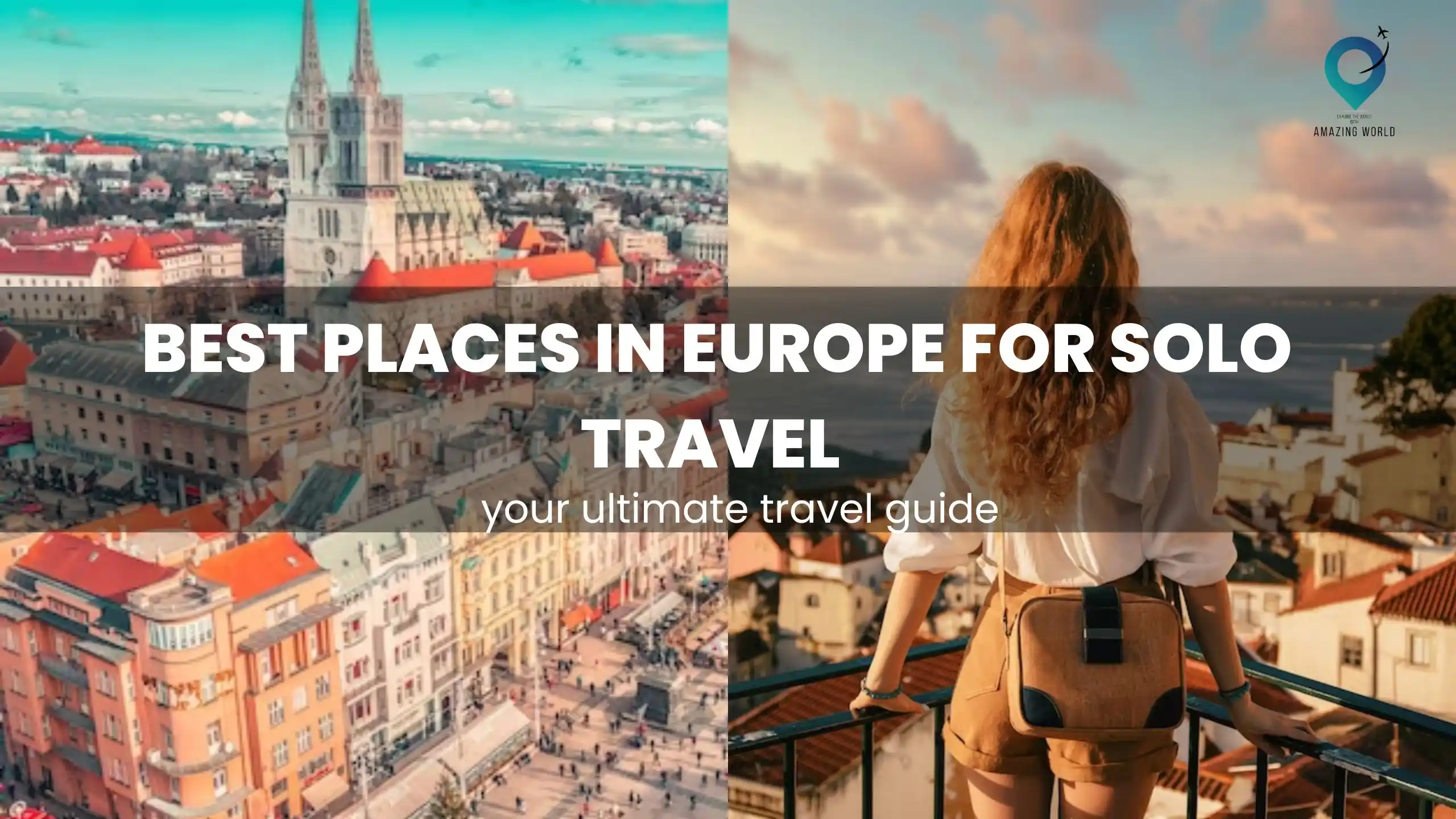
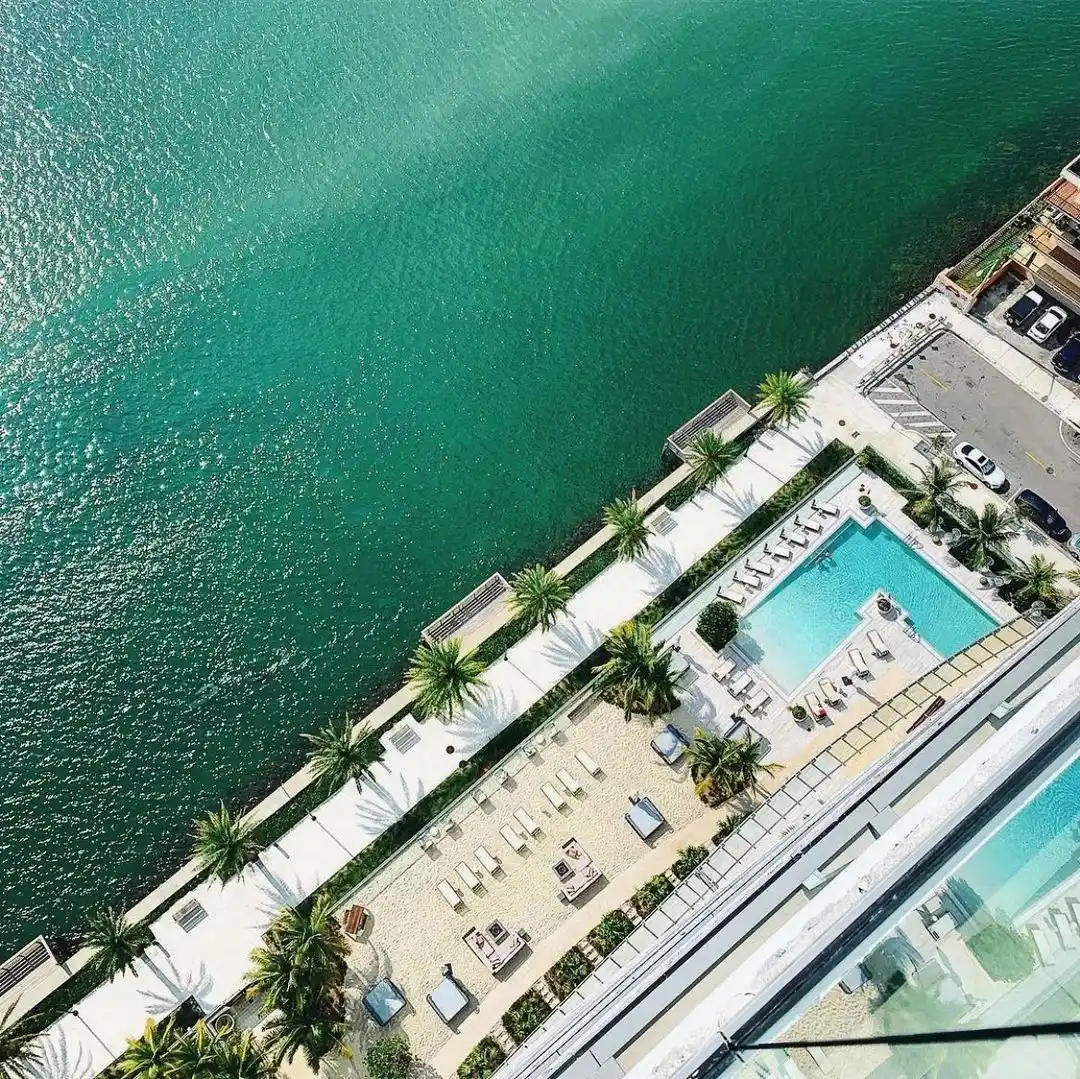







1 comment
Best Parties and Nightlife in South Beach, Miami, Wynwood &